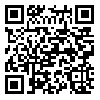Hyperspectral imaging with gathering hundreds spectral bands from the surface of the Earth allows us to separate materials with similar spectrum. Hyperspectral images can be used in many applications such as land chemical and physical parameter estimation, classification, target detection, unmixing, and so on. Among these applications, classification is especially interested. A hyperspectral image is a cube data containing two spatial dimensions and a spectral one. Generally, the Hughes phenomenon is occurred in the supervised classification of hyperspectral images due to the limited available labeled samples and the curse of dimensionality. So, feature reduction is an important preprocessing step for analysis and classification of hyperspectral data. Feature reduction methods are categorized into feature selection approaches and feature extraction ones. Our main focus in this paper is on feature extraction. The feature extraction methods are also divided into three main groups: supervised (with labeled samples), unsupervised (without labeled samples), and semi-supervised (with both labeled and unlabeled samples). The first group of feature extraction methods usually suffers from problems due to limited available training samples. These methods often consider the separability between classes, and so are efficient for classification applications. The second group has no need for training samples, but they often do not consider the separability between different classes and so, are not appropriate for classification. These methods are usually used for signal representation or preserving the local structure of data. The use of both labeled and unlabeled samples in the third group can increase the abilities of the feature extractor. A feature extraction method is proposed in this paper which belongs to the third group. The proposed method increases the class separability and tries to preserves the structure of data. The proposed feature extraction method uses the ability of unlabeled samples in addition to available limited training samples to improve the classification performance. The experimental results on three real hyperspectral images show the better performance of proposed method compared to some popular feature extraction methods in terms of classification accuracy.
Received: 2015/03/7 | Accepted: 2016/12/6 | Published: 2017/07/18 | ePublished: 2017/07/18
| Rights and permissions | |
 |
This work is licensed under a Creative Commons Attribution-NonCommercial 4.0 International License. |



